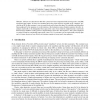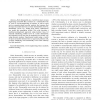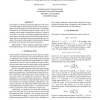988 search results - page 8 / 198 » Positive Results and Techniques for Obfuscation |
ICIP
2008
IEEE
14 years 10 months ago
2008
IEEE
Privacy protection of visual information is increasingly important as pervasive camera networks becomes more prevalent. The proposed scheme addresses the problem of preserving and...
CEAS
2004
Springer
14 years 2 months ago
2004
Springer
End users are often unaware that their systems have been compromised and are being used to send bulk unsolicited email (spam). We show how automated processing of the email logs re...
WCRE
2009
IEEE
14 years 3 months ago
2009
IEEE
—Static disassembly is a crucial first step in reverse engineering executable files, and there is a considerable body of work in reverse-engineering of binaries, as well as are...
SP
2009
IEEE
14 years 3 months ago
2009
IEEE
Malware authors have recently begun using emulation technology to obfuscate their code. They convert native malware binaries into bytecode programs written in a randomly generated...
ICASSP
2008
IEEE
14 years 3 months ago
2008
IEEE
In this paper, we develop an improved approach to the worstcase robust adaptive beamforming for general-rank signal models by means of taking into account the positive semi-defin...



